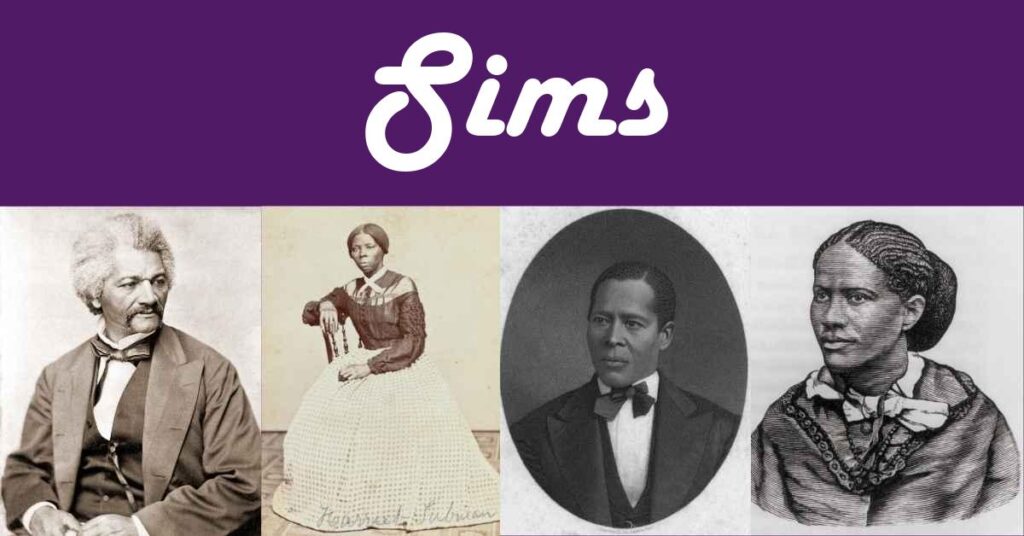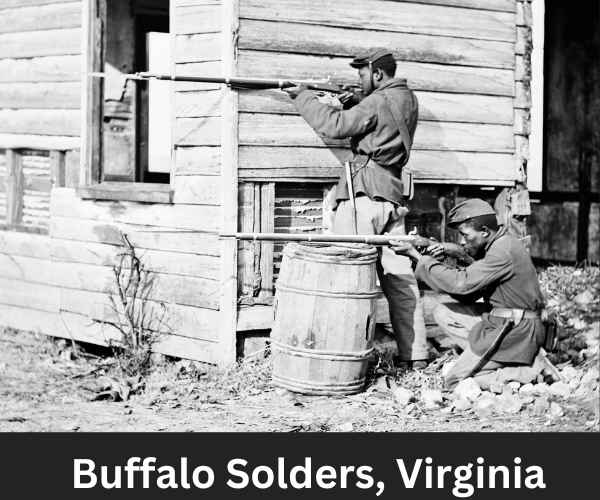The 2010 U.S. Census recorded 45,224 black Americans with Sims as their last name. That represented 40% of the total of 113,374 entries.
This article tracks their numbers in the census since the Civil War. We also look at historic African American people named Sims.
We end with a review of early records of black military service in the United States.
After The Civil War

The 1870 census was the first survey after the Civil War and the Emancipation Proclamation. In 1850 and 1860, only free African Americans were recorded in the census. The many enslaved were omitted.
From 1870 onward, all black Americans were included.
3,751 people named Sims were recorded in the 1870 census as black and 439 as mixed.
There was a total of 12,202 people with the name.
Sims In The 1900 And 1940 Census
The mixed category was dropped from the census in 1900, so we just need to look at the black numbers this time.
The 1900 census recorded 10,597 people with the last name Sims as black within a total of 28,093 that year.
By the way, the mixed category returned in the 1910 and 1920 censuses. It was dropped again in 1930, but replaced with extra categories for colored and non-white in a way that seems confusing now.
This changed again in 1940 and we can simply focus on one black category.
The 1940 census recorded 15,827 people named Sims as black within a total of 49,713.
Historic Black Figures With The Sims Surname

Here are some notable African Americans in history with Sims as their last name.
Thomas Sims
- Born: About 1828
- From: Savannah, Georgia
Thomas Sims was born in to slavery and worked as a bricklayer. He escaped from his owner in 1851 by stowing away on a ship to Boston.
He was discovered by the crew who locked him into a cabin, but the young man managed to get away. He evaded capture in Boston for over a month. But the owner sent his agent to Boston, and the city authorities arrested Sims.
As Boston was a center for abolitionists who took a great interest in his plight, the authorities surrounded the courthouse with police. They also wrapped the building in link chains to keep protesters out. The poet Henry Longfellow wrote scathingly about those chains.
The court proceedings were under the new Fugitive Slave Act. This ensured that Sims lost his case for freedom. He was transported back to Georgia under guard of the U.S. marines and sold in a slave auction.
The redoubtable Sims escaped again to Boston in 1863 and evaded capture until Emancipation.
Others arrested under the Fugitive Slave Act
Anthony Burns also stowed away to Boston where he was caught and tried under the Fugitive Slave Act. He was more fortunate than Sims. Although Burns lost his case (three years after Sims), his friends in Boston managed to buy his freedom.
William and Ellen Craft managed to get away to England as slave catchers arrived in Boston to recapture them.
John Price was arrested in Oberlin, Ohio, after his escape from Kentucky. Thirty-seven abolitionists stormed the building in which he was incarcerated and eventually got Price to freedom in Canada.
Clifford Sims
- Born: 1942
- From: Port St Joe, Florida
- Died: 1968
Clifford Chester Sims was adopted by his parents as a young teen. He joined the army in 1961 after graduating from high school and married his school sweetheart.
In 1968, Sims was a Staff Sergeant with the 501st Parachute Infantry Regiment serving in Vietnam. When his squad was approaching a bunker, Sims went in front to inspect it.
Spotting a booby trap, he threw his body onto the device and took the full blast. Every other member of the squad survived due to his actions.
Sims was awarded America’s highest military decoration, the Medal of Honor. This is the citation:
For conspicuous gallantry and intrepidity in action at the risk of his life above and beyond the call of duty. S/Sgt. Sims distinguished himself while serving as a squad leader with Company D. Company D was assaulting a heavily fortified enemy position concealed within a dense wooded area when it encountered strong enemy defensive fire.
U.S. Army
Once within the woodline, S/Sgt. Sims led his squad in a furious attack against an enemy force which had pinned down the 1st Platoon and threatened to overrun it. His skillful leadership provided the platoon with freedom of movement and enabled it to regain the initiative.
S/Sgt. Sims was then ordered to move his squad to a position where he could provide covering fire for the company command group and to link up with the 3rd Platoon, which was under heavy enemy pressure. After moving no more than 30 meters S/Sgt. Sims noticed that a brick structure in which ammunition was stocked was on fire.
Realizing the danger, S/Sgt. Sims took immediate action to move his squad from this position. Though in the process of leaving the area 2 members of his squad were injured by the subsequent explosion of the ammunition, S/Sgt. Sims’ prompt actions undoubtedly prevented more serious casualties from occurring.
While continuing through the dense woods amidst heavy enemy fire, S/Sgt. Sims and his squad were approaching a bunker when they heard the unmistakable noise of a concealed booby trap being triggered immediately to their front. S/Sgt.
Sims warned his comrades of the danger and unhesitatingly hurled himself upon the device as it exploded, taking the full impact of the blast. In so protecting his fellow soldiers, he willingly sacrificed his life.
S/Sgt. Sims’ extraordinary heroism at the cost of his life is in keeping with the highest traditions of the military service and reflects great credit upon himself and the U.S. Army.
Sims In Black Military Records

Military records are a rich resource of for family history research. Here are examples of the Sims surname from three different military services:
- Buffalo soldiers
- Black civil war sailors
- Tuskegee airmen
Buffalo Soldiers
Five regiments for black soldiers were formed during the Civil War. They were known as the Buffalo Soldiers.
Their records are part of the national archive of military monthly returns. The information includes the year and place of birth, where they enlisted, their occupation, and their height.
One of the earliest military entries for Sims was in November 1873. Theodore Sims was a Private in the U.S. Tenth Cavalry. He was stationed in November 1873 at Fort Richardson, Texas.
One of the later entries was in January 1915. Johnnie Sims was a Private in the U.S. Ninth Cavalry.
If you are researching military ancestors, there is a free index of these records on Ancestry.com and FamilySearch.org.
You have to create an account on either website, but you do not need to pay for the Buffalo Soldiers archive.
Black Civil War Sailors
The National Parks Service has a free archive of African American sailors during the Civil War.
The information includes their age, height, rank, occupation, and where and when they enlisted. It also includes every ship that they served on.
You can search the database on the National Parks website.
Josiah Sims
One of the earliest entries for Sims was for Josiah Sims from Washington, District of Columbia. He enlisted in August 28 1861 at Boston when he was aged 23.
The record shows that Josiah was assigned on January 1 1864 to the ship Florida.
His occupation before enlisting was as a Waiter. His naval rank was Landsman.
“Landsman” was the lowest rank at the time and was given to recruits with little sea experience.
Isaac Sims
One of the later entries was for a sailor who enlisted at Yazoo River in March 4 1863. Isaac was aged 32 and was from Henry County, Kentucky.
He was assigned to the ship Black Hawk on March 31 1864.
His occupation before enlisting was as a Fieldhand. His naval rank was 1st Class Boy.
“1st Class Boy” was the rank given to young men who enlisted when they were under eighteen.
Tuskegee Airmen

The Tuskegee Airmen were military personnel who served at the Tuskegee Army Airfield or related programs.
Nearly one thousand black pilots graduated from the Tuskegee Institute. They flew single-engine fighter planes or twin-engine bombers. 352 fought in combat.
Thomas Sims graduated from the Tuskegee Institute in October 1948. He qualified as a fighter pilot. Thomas was from , .